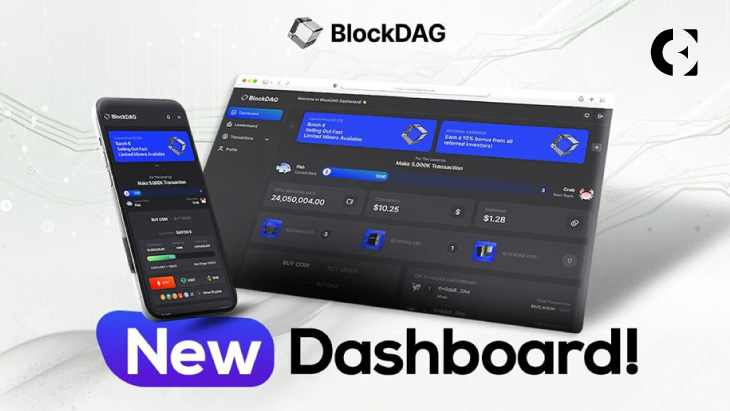Staking on Steroids: Introducing EigenLayer and Ether.fi


Key Takeaways
- Ether.fi and EigenLayer Helping ETH holders maximize their staking returns By combining re-staking and DeFi profit opportunities.
- Because these protocols are new, the risks are higher.
- Investors can start exploring Ether.fi and EigenLayer with a modest deposit (never invest more stake than you are willing to lose).
Think of Ethereum like a high-interest savings account.
When you deposit Ether (ETH), it is locked up for a set period of time (similar to a money market or CD). This locking, or “staking,” helps secure the Ethereum network. In return for staking ETH, you receive staking rewards (similar to how banks pay interest).
Key Differences: Unlike existing savings accounts, Ethereum’s new product allows you to automatically earn more ETH by reinvesting your staking rewards..
This is accomplished through two separate products, Ether.fi and EigenLayer, which process deposits, manage security, and automatically reinvest interest payments.
This process Reinvest your rewards for bigger returns. It’s similar to taking interest from a savings account and putting it into another high-yield account to grow your savings faster.
However, there are risks such as impermanent loss, possible loss of staked funds due to technical issues, and smart contract risks. Never bet more money than you are willing to lose.
This guide covers how re-staking works using EigenLayer and Ether.fi. Think of this as “investing on steroids.”
Staking Status
Ethereum’s transition to proof-of-stake (PoS) was a significant technological achievement. However, some investors have again worried that this will centralize Ethereum in the hands of a few large players.
This is because staking is time-consuming and expensive. Validators must lock up at least 32 ETH to secure the network and earn staking rewards. As of this writing, this means staking over $105,000, not to mention running complex “validation nodes” that need to be monitored 24/7.
To solve these problems, staking services were created.
The staking service allows ordinary investors to stake as much ETH as they want.. They pool this staking capital and run validation nodes to pay most of the rewards back to the stakers, making staking easier for regular people and decentralizing the network to boot.
Staking services have become very popular as the number of validating nodes has increased.
Because it is a cryptocurrency These staking services have started issuing their own tokens., is called Liquid Stake Token (LST) and is issued as a “receipt” for ETH on a 1:1 basis. (If you bet 1 ETH, you get 1 LST.)
The most popular of these staking services is Lido (LDO).As it quickly takes over a significant portion of the staking market, new concerns are being raised about the centralization of Ethereum.
meantime, ETH stakers have discovered that they can take Lido “receipt” tokens and stake them further to earn returns on top of the yield. Or add rewards on top of rewards. (See our article on the highest rates for liquidity staking derivatives.)
but What if we could automate this “re-staking” using smart contracts? Enter EigenLayer and Ether.Fi.
EigenLayer: Infrastructure for re-staking
EigenLayer is an Ethereum-based protocol that introduces the concept of re-staking.
This allows staked ETH to be repurposed to provide security for non-Ethereum protocols such as layer 2 networks, data layers, or decentralized applications to earn even more rewards.
In other words, EigenLayer is an infrastructure for pooled Ethereum security.This allows you to earn higher rewards while improving the security and efficiency of your Dapp.
As a bonus, EigenLayer contributes to a more decentralized network by making staking easier for more people.
Since its launch in 2023, the total value locked (TVL) through EigenLayer has surged to over $12 billion.
Of note, another EigenLayer product is EigenDA, a data availability layer that leverages pooled network security. For example, some Ethereum Layer-2 solutions can use EigenDA for more efficient data management to reduce costs and increase throughput.
Simply put, EigenLayer is an infrastructure for re-staking. Ether.Fi is a Restake product itself.
Ether.fi: Resale products
Ether.fi, which runs on top of Eigenlayer, is an easily reinstallable product. ETH staked on Ether.fi is automatically re-staked through EigenLayer for higher staking rewards..
However, when you stake ETH on Ether.fi, you will receive eETH (receipt tokens) in return. (1 ETH stake = you receive 1 eETH.) And You can earn more income by investing your eETH in other DeFi platforms.
Therefore, Ether.fi stakers have three streams of income:
- Pure ETH staking;
- Staking again through EigenLayer will generate additional rewards.
- Use eETH for additional DeFi profits.
To participate in DeFi, users can wrap eETH into weETH, a viribase token designed for DeFi.
Ether.fi offers an automated DeFi strategy repository called Liquid. Users can deposit eETH or weETH through Liquid, which will do all the behind-the-scenes work of allocating them to multiple DeFi positions for maximum rewards.
Note: The more you build your “Jenga tower” of staking and re-staking, the more risk you take. To see the video, watch the famous clip from “The Big Short.”
The TVL of the Ether.fi staking product has surged from $100 million to $3.3 billion in early 2024, reflecting growing interest in re-staked LST.
Risks and Considerations
EigenLayer and Ether.fi are both relatively new technologies that have not been proven in the long term.
By using EigenLayer, Ether.fi automatically exposes itself to risk, as pointed out by Ethereum co-founder Vitalik Buterin.
These risks include:
- sharp: There is a slight risk of cuts. In case of dishonest behavior, up to 100% of your ETH may be slashed.
- centralization risk: If EigenLayer grows too large or is abused, it can pose a systemic risk to the Ethereum network.
- Return Risk: As more stakeholders aim for higher AVS yields, the resulting yield for actual protocol stakeholders may decrease.
Like all decentralized protocols, Ether.fi and EigenLayer also have smart contract risks. The code may not work correctly or may be hacked.
EigenLayer and Ether.fi are unsuitable for the average ETH holder due to their novelty. However, if you are skilled at your craft and want to experiment with opportunities that will give you the highest returns, don’t stake more than you can afford to lose.
Investor Implications
EigenLayer and Ether.fi have the potential to transform Ethereum staking by introducing easy re-staking and DeFi opportunities to increase the amount you can earn with ETH.
However, this carries significant risk, so investors wishing to experiment should exercise caution.
Subscribe to Bitcoin Market Journal to learn more about the latest staking opportunities in blockchain and DeFi!



